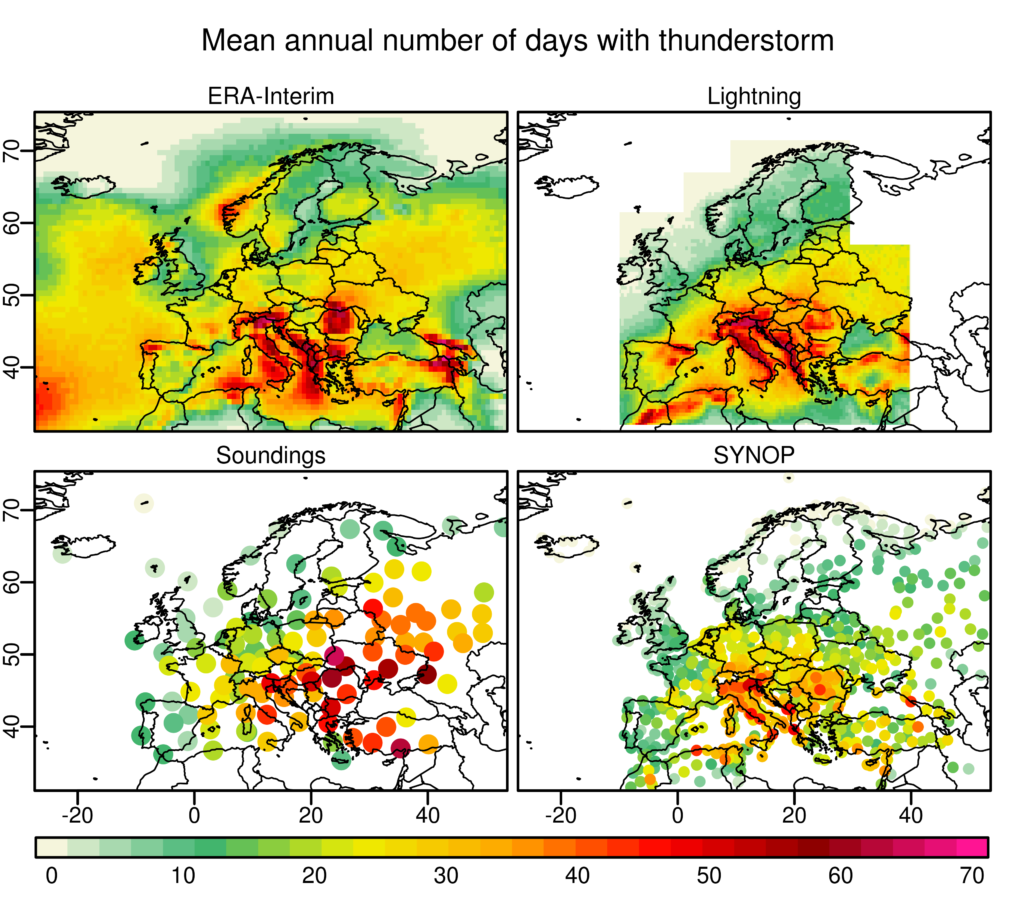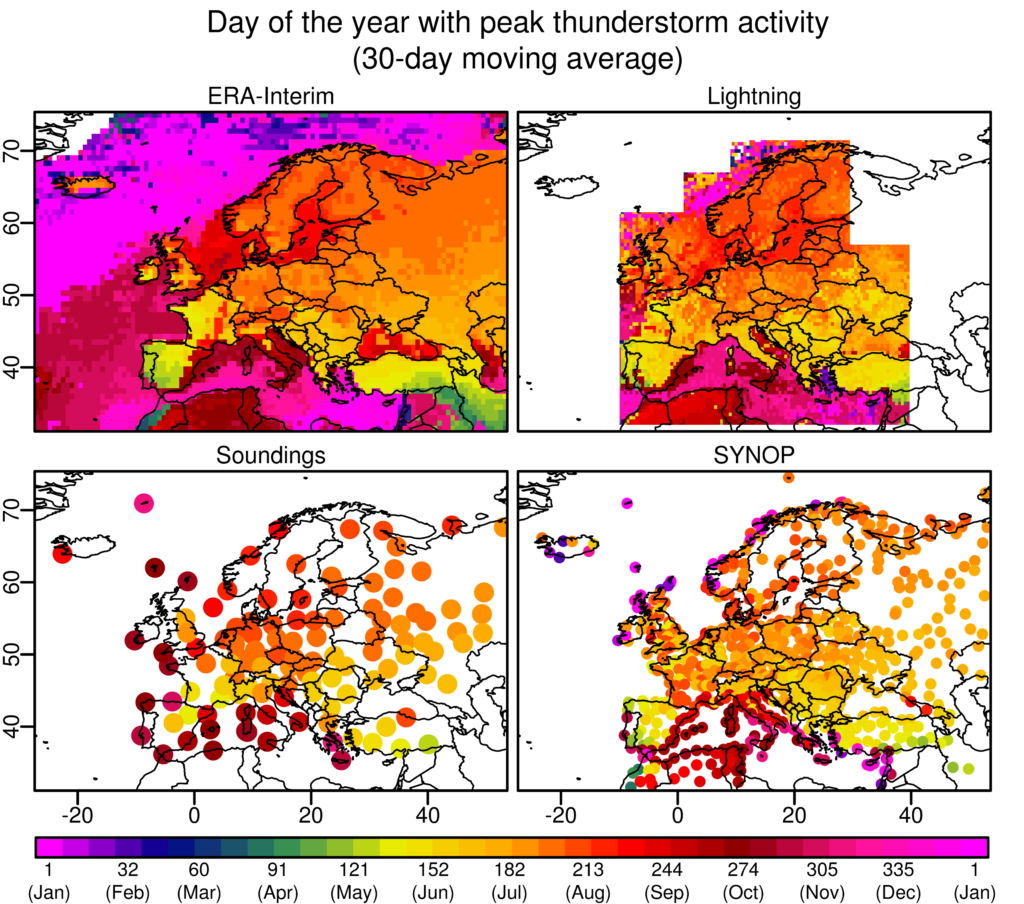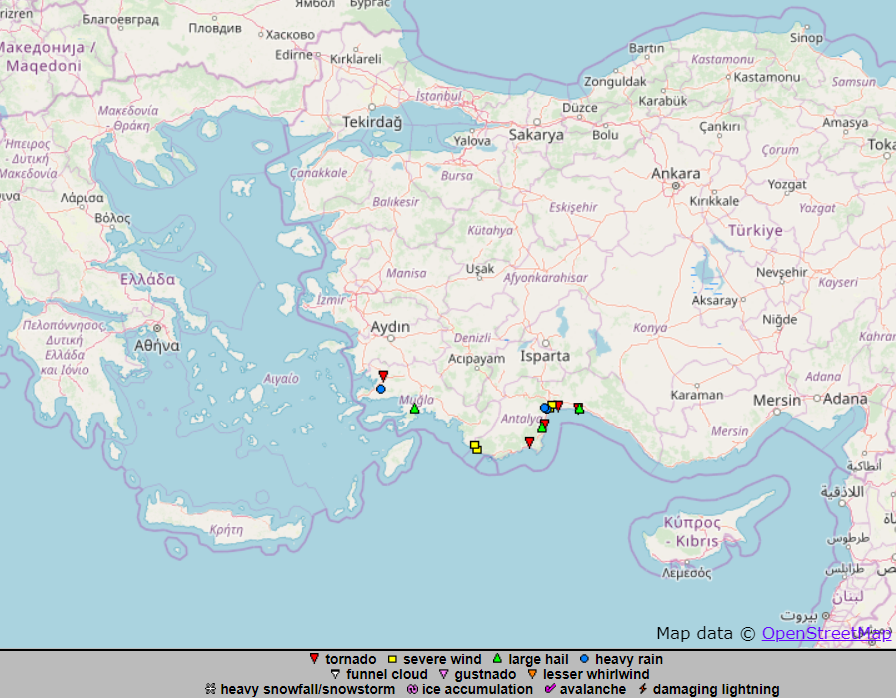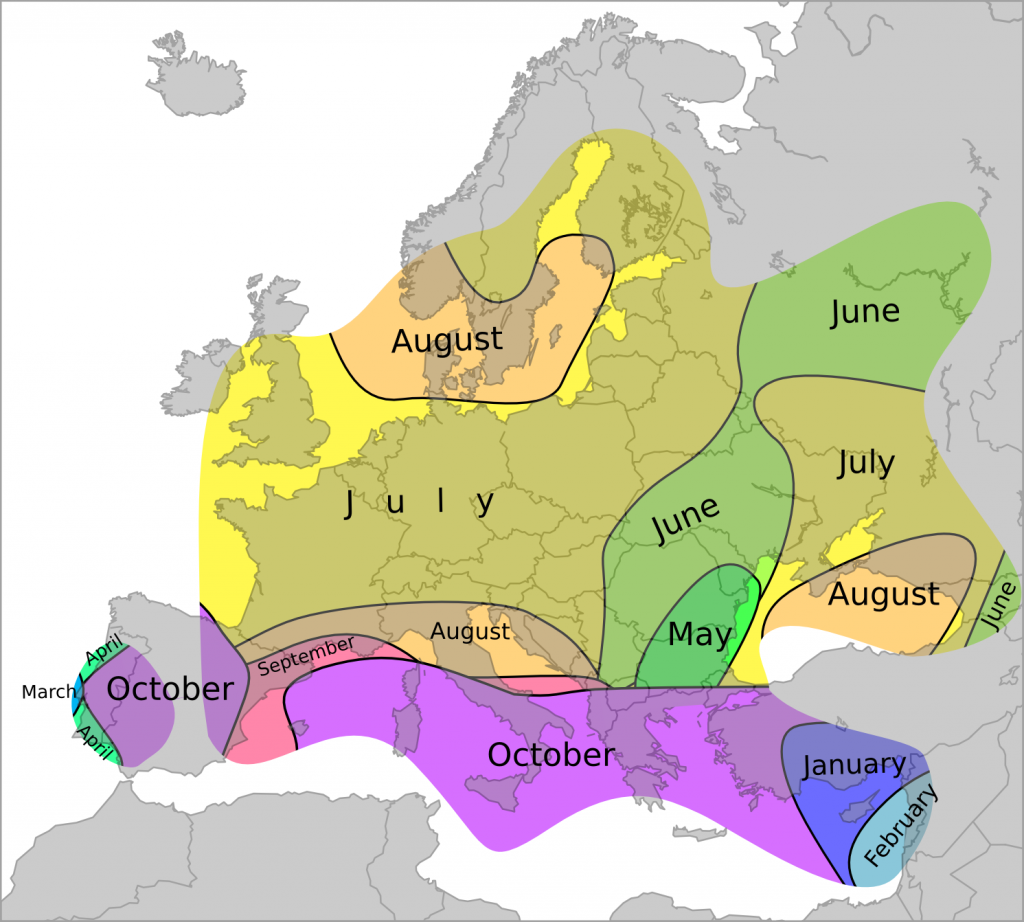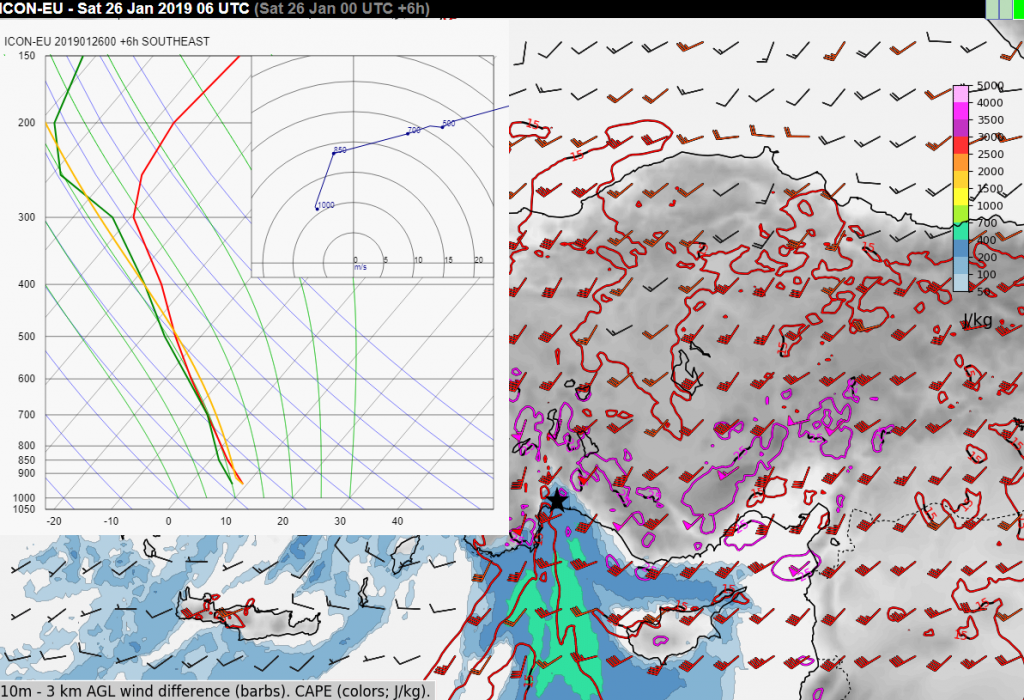Yesterday, 11 June 2019, multiple severe storms occurred over parts of Central Europe. Several of these storms were prolific hail producers and two of them even produced hailstones reaching a diameter of 10 cm or more, which we call giant hail. Such large hail was reported from Gorzów Wielkopolski-Ustronie and Wojcieszyce in western Poland with the largest stone measuring 12 cm. This makes it the biggest oficially measured hailstone in this country according to our partner Skywarn Polska.
Giant hail also occurred in Stari Trg ob Kolpi, southern Slovenia, and Brod Moravice, northern Croatia, with maximum reported hail diameter of 11 cm. This hailstorm actually tracked very close to the path of another giant hail producing storm last year that struck Crnomelj, Slovenia, with hail up to 12 cm in diameter.
With these events ocurring, one might wonder how rare such large hail actually is in Europe. Before 11 June 2019, giant hail was reported 91 times in the European Severe Weather Database (www.eswd.eu) across many different regions in Europe (see figure below) and 42 times since the founding of ESSL on 1 January 2006. Giant hail comprises on only about 0.38% of all large hail reports (minimum diameter 2 cm) submitted to the database. Such hail can cause very serious damage, injuries and occasionally be fatal to humans and animals.
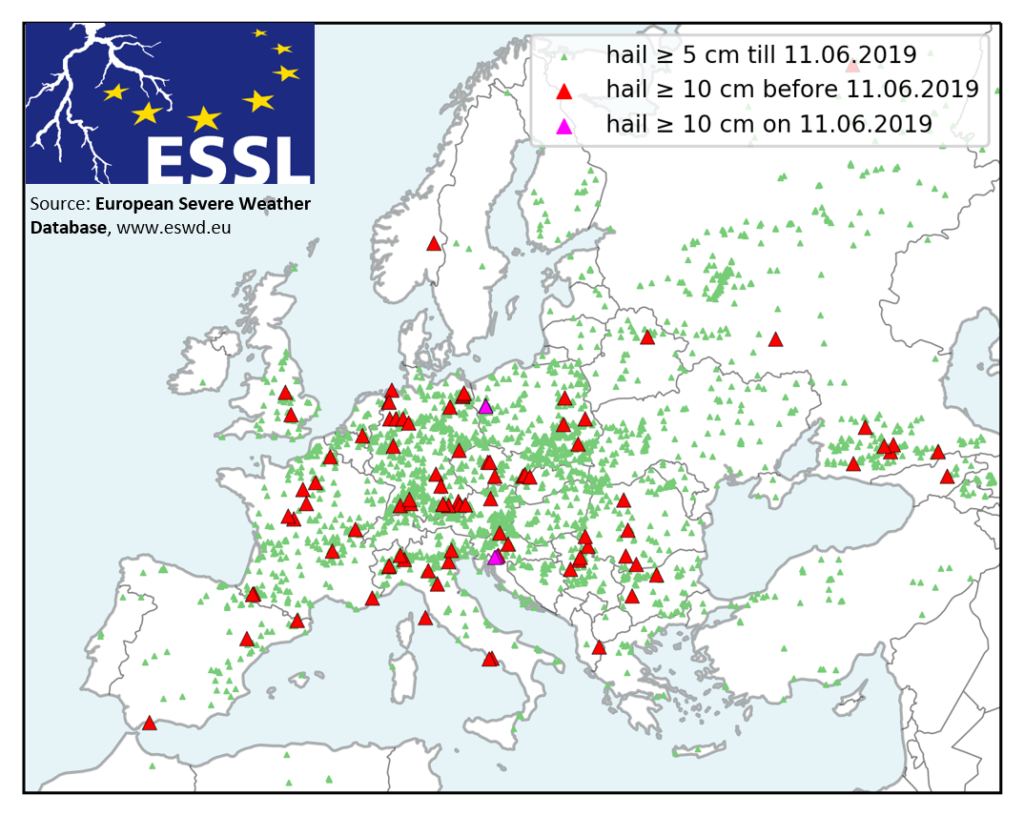
Have we observed even larger hail sizes in the past over Europe? The answer is actually yes: The largest reported hail sizes in recent years are 15 cm on 20 June 2016 in Sânandrei in western Romania and 14.1 cm on 6 August 2013 in Undingen in southwestern Germany.

